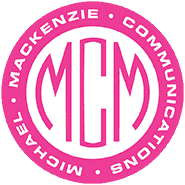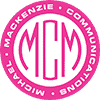In our current digital age, understanding how hashtags work is key to a successful social media marketing strategy. Originally introduced by Twitter back in 2007, hashtags are now commonplace on all social media platforms and transformed elements of platform algorithms. The hashtag serves as a powerful tool for content organization and amplification.
What is a Hashtag?
The creation of the hashtag can be credited to Chris Messina who wanted to create a way for related tweets to be grouped by topic. This led to the hashtag, a pound symbol (#) preceding a word or phrase related to the post’s content. Their primary function is to sort content by topic to create a better search experience and allow users to easily find the content they’re looking for.
The Benefits of Hashtags
Why should users utilize hashtags in their social media strategies? Here are a few advantages
- Enhanced Content Relevance: Social media platforms use hashtags to understand the focus of specific content and recommend it to users who often like or follow similar content. For example, incorporating #fashion in a post makes it more likely to appear on the recommended pages of users who engage with fashion content.
- Improved Searchability: Hashtags act like keywords in a post and make a post more likely to pop up for specific search results which makes content more likely to be seen by non-followers. This does not apply to Instagram as their algorithm uses keywords in the caption more than hashtags.
- Broadened Reach: Many users follow specific hashtags to get any content tagged with that topic in their feed, this also increases the chances that non-followers will see certain content.
- Engagement Boost: Users are more likely to engage with content that applies to topics they are already interested in which is why telling the algorithm what specific content is about so that it appears on the correct recommended page is key to gaining more engagement.
Platform Specific Strategies
Every platform uses a different algorithm to find, sort, and recommend content to users. Because of this, each platform utilizes hashtags differently and has different preferences for how they should be used in a post. For example, Instagram used to put a heavy emphasis on hashtag use, recommending 30 or more for every post. This changed to only 3 to 5 hashtags per post and now Instagram suggests that hashtags do not affect reach and keywords in the caption are more important. Due to ever-changing algorithms on all platforms, it is important to stay up to date on algorithm preferences and adjust your hashtag strategy accordingly. If used incorrectly, hashtags can damage your post and result in being punished by the algorithm so be sure to follow platform-specific recommendations!
This post is courtesy of MMC Marketing Intern Lily Reimann.



